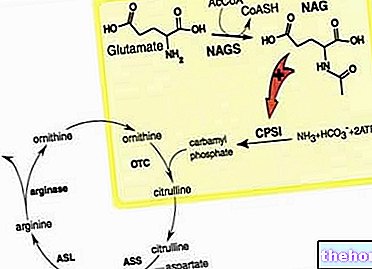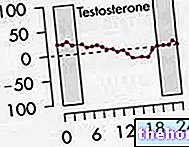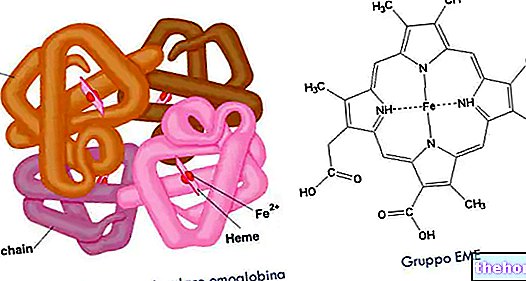Generality
Osmolarity expresses the concentration of a solution, underlining the number of particles dissolved in it regardless of the electric charge and size.

A liter of solution containing one mole of glucose will therefore have the same osmolarity as a liter of solution containing one mole of sodium (because a mole, by definition, contains a fixed number of particles - atoms, ions or molecules -, equal to 6, 02x1023). However, the osmolarity of the two will be different from one liter of a third solution, containing one mole of table salt; the latter (whose molecular formula is NaCl), in aqueous environment, in fact, dissociates into Na + and Cl-, thus giving resulting in a solution containing twice as many particles.
Under normal conditions, osmolarity is identical for all fluids present in the various compartments of the organism and its value is around 300 mOsM (any gradients are canceled by water movements). These compartments can be divided into intra- and extra-cellular, which contain, respectively, a quantity of water equal to 40% and 20% of body weight; the extracellular compartment is further subdivided into two compartments: the plasma one (1/3) and the interstitial one (2/3).
It is very important that the osmolarity of the various compartments is the same; in fact, if the concentration of solutes in the extracellular liquid increases, the water exits the cell by osmosis (and wrinkles), while in the opposite situation the cell draws water until it bursts.
Note: although it is the number of osmoles per kg (osmolality) and not that per liter (osmolarity) that determines the "entity of osmosis", for very diluted solutions - such as body solutions - the quantitative differences between osmolarity and osmolality are below of 1% (because only a small part of their weight comes from the solute). For this reason the two terms are often used interchangeably as synonyms.
The main regulator of plasma osmolarity is the kidney, which produces more or less diluted urine according to the homeostatic needs of the organism.
In the extracellular water compartment the most important osmole is sodium, while in the intracellular one potassium prevails.
* It must be said, however, that the effective plasma osmolarity (or tonicity) does not correspond to the total one. In fact, only the molecules that cannot freely cross the semipermeable membranes cause water movements from the more concentrated solution to the less concentrated one. interposed. On the contrary, there are others, such as urea, which while contributing to the determination of osmolarity are freely permeable (they cross membranes) and as such cannot create water gradients.
Therefore, urea passes the cell barrier without problems and is therefore unable to influence water movements on both sides of the membrane.

For this purpose, the hypothalamic osmoreceptors - stimulated by hypersodemia - trigger the stimulus of thirst and the consequent introduction of water brings the plasma osmolarity back into balance. At the same time, the antidiuretic hormone (or ADH or vasopressin) is released, which acts at the same level. renal by increasing the reabsorption of water and consequently decreasing its elimination in the urine. These, for their part, increase their osmolarity (because they are more concentrated). The kidney has the ability to raise this parameter up to 1200 mOsM / L, or to decrease it up to 50 mOsM / L, depending on the different organic needs.
What's this
- Osmolarity is the measure of the number of particles dissolved in a fluid (volume expressed in liters).
- The osmolarity test reflects the concentration of substances such as sodium, potassium, chlorine, glucose, and urea in a sample of blood, urine, or sometimes stool.
- Plasma osmolarity is used to evaluate the balance between water and dissolved particles in the blood, and to determine the presence of substances that can cause an imbalance of this state.
Because it is measured
Plasma osmolarity is used to assess the body's water-salt balance and identify the origin of significantly increased or decreased urine production. The test is also used to determine states of hyponatremia (low sodium concentrations) due to urine depletion or increased blood fluids.
Plasma osmolarity is useful as an aid in determining the cause of chronic diarrhea and allows for monitoring of treatment with osmotically active drugs (as in the case of mannitol, a diuretic used for the therapeutic management of cerebral edema).
In addition, the investigation can be used as a toxicological test if ingestion of methanol, ethylene glycol, isopropyl alcohol, acetone and drugs, such as acetylsalicylic acid (aspirin), is likely in large quantities.
Normal values
Normal osmolarity values are between 275 and 295 mOsm / L.
Note: the reference range of the test may change according to age, gender and equipment used in the testing laboratory. For this reason, it is preferable to consult the ranges reported directly on the report. It should also be remembered that the results of the analyzes must be evaluated as a whole by the general practitioner who knows the patient's medical history.
High Osmolarity - Causes
Values of osmolarity higher than the norm could depend on the following conditions or pathologies.
- Hyperglycemia;
- Uremia;
- Hypernatremia;
- Insipid diabetes;
- Hyperlactacidemia (lactic acidosis).
Increased values can also be found in the case of:
- Diabetes mellitus;
- Mannitol therapy
- Diabetic ketoacidosis;
- Alcoholic ketoacidosis;
- Kidney failure;
- Dehydration;
- Liver disease;
- Trauma;
- Shock;
- Poisoning by ethanol, ethylene glycol, isopropyl alcohol and methanol.
Low Osmolarity - Causes
A decrease in osmolarity can result from:
- Hyponatremia;
- Inappropriate ADH secretion
How it is measured
Plasma osmolarity is measured following a blood sample from a vein in the arm. This parameter can also be determined on a random urine sample or, in some cases, on fresh liquid stools (chilled or frozen within 30 minutes of collection) .
Preparation
Sometimes, the plasma osmolarity test does not require any preparation; in other cases, it is necessary to fast (no food or drink except water) for at least 6 hours before taking the test. The doctor will be able to provide the most appropriate instructions for the case.
Interpretation of Results
Plasma osmolarity is a dynamic parameter, which fluctuates according to how the body responds to the temporary water-saline imbalance and how it corrects it. The test result must be evaluated together with the patient's clinical picture and the result of other tests, such as sodium, glucose and azotemia.
Osmolarity is not diagnostic: it suggests that the patient has an imbalance, but does not highlight the cause. In general, when the value is high, it means that the water in the blood has decreased and / or the solutes have increased. If the osmolarity is reduced, however, an increase in liquids is likely.
Among the various diseases that can be responsible for an increase in plasma osmolarity are found, most commonly, uremia, hyperglycemia, diabetes insipidus, hyperlactacidemia and hypernatremia.
A decrease in osmolarity can derive, however, above all from the presence in the patient of a state of hyponatremia.




























